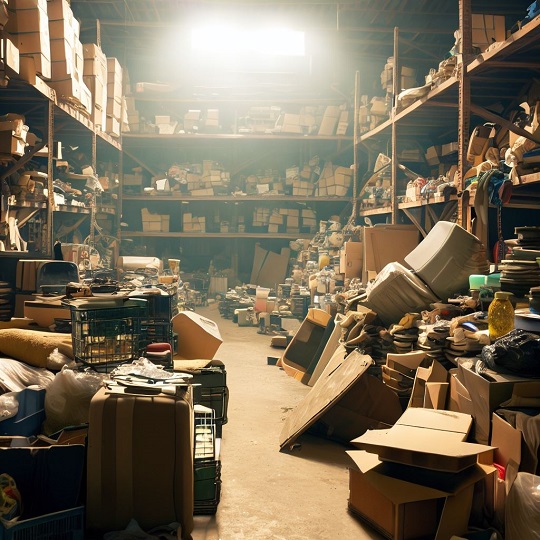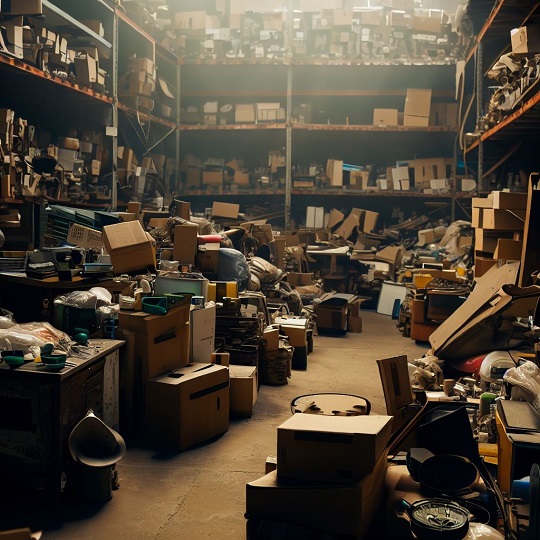In today’s fast-paced business world, efficiency is the key to success. For warehouses and distribution centers, maintaining an organized and clutter-free environment is essential to optimizing operations.
One highly effective method for achieving this is through Red Tag activities.
In this comprehensive guide, we will explore what Red Tag activities are, why they are crucial, and provide a step-by-step process on how to conduct them effectively in your warehouse.
Before we go further into this topic, don’t forget to follow my LinkedIn account. You’ll get more helpful insights on supply chain management there.
Table of Contents
Understanding Red Tag Activities
What Are Red Tag Activities?
Red Tag activities are an essential part of Lean and 5S (Sort, Set in order, Shine, Standardize, Sustain) methodologies, aimed at eliminating waste and improving workplace organization.
These activities involve identifying and removing unnecessary items, equipment, or materials from a workspace to create a more efficient and safer environment.
Why Are Red Tag Activities Important?
- Enhanced Efficiency: Red Tag activities help in decluttering the workspace, making it easier for employees to find what they need quickly, reducing downtime, and improving productivity.
- Safety Improvement: Eliminating unused or unnecessary items reduces the risk of accidents caused by clutter, obstructions, or unsafe storage practices.
- Cost Savings: Reducing excess inventory and equipment can lead to cost savings in terms of storage, maintenance, and replacement expenses.
- Improved Employee Morale: A clean and organized workspace enhances employee morale, leading to a more pleasant and productive work environment.
Preparing for Red Tag Activities
Assemble a Cross-Functional Team
Gather a team of employees from various departments within your warehouse. Cross-functional teams provide diverse perspectives and ensure that all aspects of warehouse operations are considered during the Red Tag process.
Establish Clear Goals and Objectives
Define what you want to achieve with your Red Tag activities. Setting specific goals will help keep the team focused and motivated throughout the process.

Common goals include reducing clutter, improving safety, and optimizing space utilization.
You might also like:
- How to Maximizing Shelf Life for Food Manufacturers
- More Than Just Tech Problems: How Supply Chain Managers Handle People and Processes in Many Ways
Conducting Red Tag Activities
Red Tag activities are the cornerstone of warehouse organization and efficiency.
In this section, we will delve deeper into the practical aspects of conducting these activities, from getting started to making informed decisions about tagged items and the crucial step of documenting and tracking your progress.
Getting Started
Select an Area
The first step in conducting Red Tag activities is to identify the specific area within your warehouse that requires attention.
This area could be a storage section, a workspace, or any zone where clutter and inefficiency have become noticeable. By selecting a well-defined area, you can focus your efforts effectively and make meaningful improvements.
Notify Employees
Before you kick off your Red Tag initiative, it’s essential to notify your employees in advance.
Communication is key to a successful transition. Explain the purpose and benefits of Red Tag activities to your team, and emphasize that this effort is not about downsizing but rather optimizing the workspace.

Encourage their active participation and involvement in the process, as their insights and knowledge are invaluable.
By informing your employees, you not only ensure they are prepared for the upcoming changes but also avoid unexpected disruptions to regular warehouse operations. Creating a sense of ownership and shared responsibility will foster a positive atmosphere for the Red Tag activities.
The Red Tag Process
The core of Red Tag activities lies in the systematic process of identifying, evaluating, and making decisions about items in the chosen area.
Tagging
Red Tagging is where the process begins.
Provide Red Tags, typically bright red labels or stickers, to your team members. Instruct them to tag items that meet one or more of the following criteria:
- Not in use: Identify items that have not been used in a considerable time. These items often occupy valuable space and contribute to clutter.
- Obsolete: Look for outdated equipment, materials, or documentation. Obsolete items may not only be taking up space but also pose a risk of being mistakenly used.
- Excess: Identify items that exceed the required quantity or are redundant. Overstocked items tie up capital and storage space.
- Unidentifiable: Search for items that are unmarked or unlabeled, making them hard to identify or use. Such items can lead to confusion and inefficiencies.
Evaluation
Once items are tagged, it’s crucial to conduct a thorough evaluation of each tagged item. This evaluation should include:
- Item Description: Identify and document what the item is. A clear understanding of the item’s purpose is essential for making informed decisions.
- Purpose: Determine the item’s intended purpose and necessity within the workflow of your warehouse. Is it a critical tool, a backup, or an item that has outlived its usefulness?
- Usage Frequency: Assess how often the item is used in daily warehouse operations. Items used infrequently may be candidates for relocation or disposal.
- Condition: Evaluate the physical condition of the item and whether it is safe to use. Safety should always be a top priority in the decision-making process.
Decision-Making
Based on the evaluation conducted in the previous step, it’s time to make decisions regarding each tagged item. These decisions fall into four primary categories:
- Keep: Items that are necessary, in good condition, and used regularly should be kept in their current location. However, it’s essential to ensure that these items are properly organized and stored for easy access.
- Relocate: Items that are necessary but not used frequently should be relocated to a more suitable storage area. This frees up prime workspace for more critical activities and helps in better space utilization.
- Dispose: Items that are obsolete, in poor condition, or no longer necessary should be disposed of properly, following relevant regulations. Dispose of these items in an environmentally responsible manner, and be sure to document the disposal process.
- Review: Some items may require further evaluation or input from higher authorities before a decision is made. This is particularly relevant for items with complex use cases or potential legal or compliance issues.
Documenting and Tracking
Maintaining detailed records of all items and their respective decisions is essential for the success of your Red Tag activities. This documentation serves several critical purposes:
- Accountability: It allows you to track who made the decision for each item and ensures transparency in the process.
- Measurement: You can measure the impact of your Red Tag activities by comparing the initial state to the post-Red Tag state in terms of reduced clutter, improved organization, and increased workspace efficiency.
- Compliance: Documentation ensures that you are adhering to any legal or regulatory requirements related to the disposal of certain items.
- Continuous Improvement: By tracking your progress, you can identify areas where further improvements are needed and plan future Red Tag activities accordingly.
You might also like:
- The Complete Guide to Creating Useful Item Codes for Efficient Material Management in ERP Systems
- Safeguarding Your Inventory: Detecting and Preventing Manipulation
Implementing Sustainable Change
Training and Standardization
After the Red Tag activities are completed, it’s essential to provide training to employees on maintaining the organized workspace. Establish standardized procedures for managing inventory and workspace organization to prevent clutter from accumulating again.
Continuous Improvement
Red Tag activities are not a one-time event; they should be part of an ongoing improvement process. Regularly schedule follow-up Red Tag sessions to ensure that the workspace remains clutter-free and efficient.
Conclusion
Red Tag activities are a powerful tool for optimizing warehouse operations, enhancing safety, and reducing costs. By involving employees in the process and maintaining a commitment to continuous improvement, you can create a culture of efficiency and organization within your warehouse that will contribute to long-term success.
Remember that the key to a successful Red Tag initiative is not just the removal of unnecessary items but also the creation of a mindset focused on continuous improvement and workspace optimization. Start your Red Tag activities today, and watch your warehouse transform into a more efficient and productive environment.
I hope you find it helpful!
Please share this article with your colleagues so they can also benefit. For more insights on supply chain management, follow my LinkedIn account. You’re free to use all articles on this blog for any purpose, even for commercial use, without needing to give credit.

 by
by 

